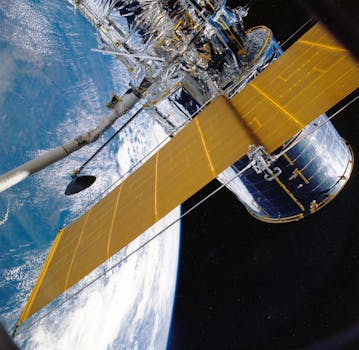
Satellite Telecommunications 2023: What’s New and What’s Next?
Satellite Telecommunications has become an essential part of our daily lives, providing global connectivity and communication services to individuals, businesses, and governments. As we move forward in 2023, the industry is witnessing significant growth and advancements, driven by new technologies and innovations. In this article, we will explore the latest developments and trends in satellite telecommunications, and what we can expect in the future.
The satellite telecommunications industry has come a long way since its inception, with significant improvements in technology, infrastructure, and services. Today, satellite telecommunications play a critical role in providing global connectivity, particularly in remote and underserved areas where traditional communication infrastructure is limited or non-existent. With the increasing demand for high-speed internet and mobile connectivity, satellite telecommunications are becoming an essential part of our daily lives.
Advancements in Satellite Technology
One of the significant advancements in satellite technology is the development of high-throughput satellites (HTS). HTS offer higher bandwidth and faster speeds, making them ideal for applications such as broadband internet, mobile connectivity, and video transmission. Additionally, the development of low-earth orbit (LEO) satellites has improved the latency and speed of satellite communications, making them more competitive with traditional fiber-optic networks.
Another significant development in satellite technology is the use of phased arrays and beamforming techniques. These technologies allow satellites to dynamically adjust their beam patterns and frequencies, providing more efficient use of bandwidth and improved signal quality. Furthermore, the development of advanced propulsion systems, such as electric propulsion and hall effect thrusters, has improved the maneuverability and lifespan of satellites.
New Services and Applications
The satellite telecommunications industry is witnessing the emergence of new services and applications, driven by advancements in technology and increasing demand for global connectivity. One of the significant trends is the growth of satellite-based broadband internet services, particularly in remote and underserved areas. Companies such as SpaceX, Amazon, and OneWeb are launching constellations of LEO satellites to provide global broadband internet coverage.
Another significant trend is the growth of satellite-based mobile connectivity services, particularly in the maritime and aviation industries. Satellites are being used to provide connectivity services to ships, aircraft, and other vehicles, enabling real-time communication and navigation. Additionally, satellites are being used to provide connectivity services to IoT devices, such as sensors and trackers, enabling real-time monitoring and tracking.
Regulatory Environment and Challenges
The satellite telecommunications industry is subject to a complex regulatory environment, with various international and national regulations governing the use of satellite frequencies, orbits, and services. The International Telecommunication Union (ITU) plays a critical role in regulating the use of satellite frequencies and orbits, while national regulatory bodies govern the licensing and operation of satellite services.
Despite the advancements and growth in the satellite telecommunications industry, there are several challenges that need to be addressed. One of the significant challenges is the issue of space debris, which poses a significant risk to the safety and sustainability of satellite operations. Additionally, the industry faces challenges related to cybersecurity, interference, and spectrum management, which need to be addressed through international cooperation and regulatory frameworks.
Conclusion and Future Outlook
In conclusion, the satellite telecommunications industry is experiencing significant growth and advancements in 2023, driven by new technologies and innovations. The development of HTS, LEO satellites, and phased arrays is improving the efficiency and speed of satellite communications, while new services and applications are emerging to meet the growing demand for global connectivity. However, the industry faces several challenges related to regulation, space debris, and cybersecurity, which need to be addressed through international cooperation and regulatory frameworks.
As we look to the future, we can expect significant advancements in satellite technology, particularly in the areas of quantum communications, artificial intelligence, and machine learning. The use of satellite-based services is expected to grow, particularly in areas such as broadband internet, mobile connectivity, and IoT. Additionally, we can expect to see increased investment in the satellite telecommunications industry, driven by the growing demand for global connectivity and the emergence of new services and applications.



